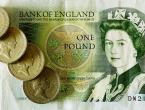On Friday (October 1), following the rebalancing of capital flows and the stock market rebound on the first day of the quarter, the U.S. dollar fell against G-10 currencies across the board on Friday. Commodity currencies rebounded against the U.S. dollar. The yield on the 10-year U.S. Treasury fell for the third consecutive day, falling to 1.46%.
The U.S. dollar index fell 0.20% to 94.05, due to the combined effects of speculative profit settlement after the sharp rise at the end of the quarter, corporate hedging, and new allocations by large mid- and long-term investors.
The US economic data released on Friday was mixed, adding to the weakness of the US dollar before the weekend. In the United States, consumer spending rose more than expected in August, increasing by 0.8%, but consumption in July was revised down to a decline of 0.1%, instead of the previously announced increase of 0.3%. Inflation remains high, but not much. The core personal consumption expenditure (PCE) price index, which excludes unstable food and energy components, rose 0.3% in August, the same rate as the previous month. Manufacturing data is more optimistic. The Institute of Supply Management (ISM) announced that the manufacturing index rose to 61.1 in August and 59.9 in August.
The higher-than-expected U.S. inflation data prompted traders to speculate on the timing of the code reduction and interest rate hike; two Fed officials reiterated their support for reducing the scale of asset purchases in the near future. Marc Chandler, chief market strategist at Bannockburn Global Forex, said that a more hawkish stance seemed to be the key factor that pushed the dollar higher at the end of September. However, the current focus is on fiscal policy, although investors seem to have seen it through, because many people believe that US debt default is unthinkable.
The euro is the worst among the G-10 currencies, rising 0.14% against the US dollar to 1.1596, after falling for five consecutive days; this week it fell by about 1.06%, the largest percentage drop since mid-June.
The dollar fell 0.22% to 111.05 against the yen, and the risk reversal expanded, indicating that the demand for yen call options was higher; during the New York session, the decline of the dollar against the yen was limited due to stock market rises and hedging activities.
The Norwegian Krone, the New Zealand dollar and the British pound led the gains after a sharp decline in the third quarter; Neil Jones, head of foreign exchange sales at Mizuho Bank’s financial institutions, said that these currencies were all sold off at the end of the last quarter. The quarter is over and we are starting again.
The British pound rose 0.53% to 1.3546 against the US dollar; corporate buying and medium- and long-term large-scale investor buys boosted the pound earlier, speculative accounts tried to do more pound against the euro; the euro fell 0.4% against the pound for the second day in a row Go lower. Due to increasingly serious supply chain problems, the pound's performance in the last quarter was poor, falling by 2.5% and recording its worst weekly performance in more than a month.
The Australian dollar rose 0.43% against the US dollar to 0.7258, and fell 3.6% in the third quarter. It was the worst performance among the Group of Ten currencies against the US dollar due to the sharp drop in the price of Australia’s largest export commodity, iron ore. The Norwegian Krone rose 1.5% against the U.S. dollar; the New Zealand dollar rose 0.67% against the U.S. dollar.
Monday preview
OPEC+ holds the 21st Ministerial Conference
Summary of Institutional Views
Financial website Fxstreet: The U.S. dollar is overbought, showing signs of exhaustion of the rally
Market risk aversion once again dominated the financial market this week, with the US dollar and gold prices rising, but the US dollar is already overbought against most major currencies, and the possibility of a corrective decline is higher. The US gross domestic product in the second quarter was revised up to 6.7% from the previous quarter, slightly better than expected. But until the non-agricultural employment report is released next week, the employment data has been disappointing. Earlier, the euro against the U.S. dollar EUR/USD fell to a new low of 1.1562 in 2021, and the British pound against the U.S. dollar GBP/USD bottomed out at 1.3516. Commodity-related currencies rebounded well, but from a broader perspective, these gains appear to be in the consolidation phase.
United Overseas Bank: EUR/USD is expected to find solid support near 1.1530
Last trading day we emphasized that the euro may weaken further, the next support level is 1.1565, followed by the key level of 1.1530. The euro fell to 1.1561 yesterday and then closed at 1.1581. The downward momentum of Europe and the United States has slowed down. Although the euro may fall further, the main and strong support level of 1.1530 may not be easily broken. In general, as long as the strong resistance level of 1.1655 is not broken, the current downside risks will not change.











